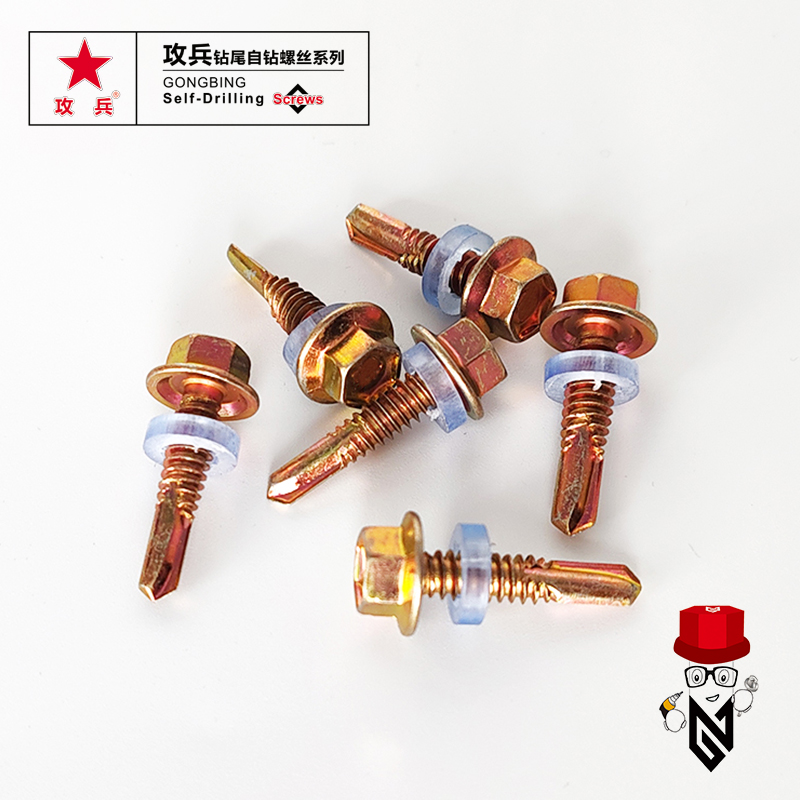self drilling toggle bolt
The Versatile Self-Drilling Toggle Bolt A Comprehensive Guide
In the world of construction and home improvement, the right fastener can make all the difference. Among the various options available, self-drilling toggle bolts stand out for their versatility and efficiency. These innovative fasteners are designed to provide strong, reliable anchoring in a range of materials, including drywall, hollow walls, and even light masonry. In this article, we will delve into what self-drilling toggle bolts are, how they work, their advantages, and their various applications.
What Are Self-Drilling Toggle Bolts?
Self-drilling toggle bolts are a type of anchor that consists of a metal toggle and a threaded shaft. The unique feature of self-drilling toggle bolts is their ability to drill through drywall or other materials without the need for pre-drilling a hole. This makes them particularly useful for tasks where time and precision are essential. The toggle is comprised of two wings that open up inside the wall once the bolt is inserted, providing a strong grip against the backside of the material.
How Do Self-Drilling Toggle Bolts Work?
The installation process for self-drilling toggle bolts is straightforward. The first step is to select the appropriate size toggle bolt based on the weight of the item you intend to hang. After marking the desired location, the installer can use a drill/driver to insert the self-drilling toggle bolt directly into the drywall. As the bolt penetrates, the toggle wings elegantly fold in, allowing the fastener to pass through the hole. Once the bolt is fully inserted, the wings expand, providing a secure anchoring point. With this design, self-drilling toggle bolts can hold significantly more weight than standard screws when placed correctly.
Advantages of Self-Drilling Toggle Bolts
self drilling toggle bolt

One of the primary advantages of self-drilling toggle bolts is their ease of installation. Without the need for pre-drilling, installers can save substantial time and effort. Additionally, they are capable of supporting heavy loads, making them ideal for mounting items like shelves, cabinets, and televisions.
Another benefit is their adaptability. Self-drilling toggle bolts can be used on a variety of substrates, including drywall, plaster, and even hollow concrete blocks. This versatility means that they are suitable for both residential and commercial applications. Furthermore, they can be used where traditional anchors simply won't work, such as through uneven surfaces or in tight spaces.
Applications of Self-Drilling Toggle Bolts
The versatility of self-drilling toggle bolts makes them suitable for numerous applications. One common use is in the mounting of shelving units, where the weight of the items stored can be considerable. In addition, they are frequently used for hanging mirrors, picture frames, and artwork, ensuring that these items stay securely in place.
In industrial settings, self-drilling toggle bolts are employed to secure machinery and equipment. Their ability to provide a strong anchor point in hollow walls or panels makes them invaluable in warehouses and fabrication shops. Additionally, they are often used in the installation of electrical fixtures and plumbing components, contributing to the overall integrity of the infrastructure.
Conclusion
Self-drilling toggle bolts are an indispensable tool in the arsenal of any DIY enthusiast or professional contractor. Their ease of use, strength, and wide range of applications make them ideal for a variety of construction and home improvement tasks. Whether you're hanging a heavy mirror in your living room or securing industrial equipment in a factory, self-drilling toggle bolts provide a reliable solution for anchors under challenging conditions. When choosing the right fastener for your project, consider including self-drilling toggle bolts in your toolkit to ensure a strong and lasting hold.
-
Weatherproof Plastic Expansion Anchors for OutdoorNewsJun.06,2025
-
Sustainability in the Supply Chain: Eco-Friendly TEK Screws ProductionNewsJun.06,2025
-
Load-Bearing Capacity of External Insulation FixingsNewsJun.06,2025
-
Double Head Bolts: Enhancing Efficiency in Industrial MachineryNewsJun.06,2025
-
Corrosion Resistance in Chipboard Screws: Coatings for Wholesale DurabilityNewsJun.06,2025
-
Butterfly Toggle Bolts : Enhancing Structural ResilienceNewsJun.06,2025
